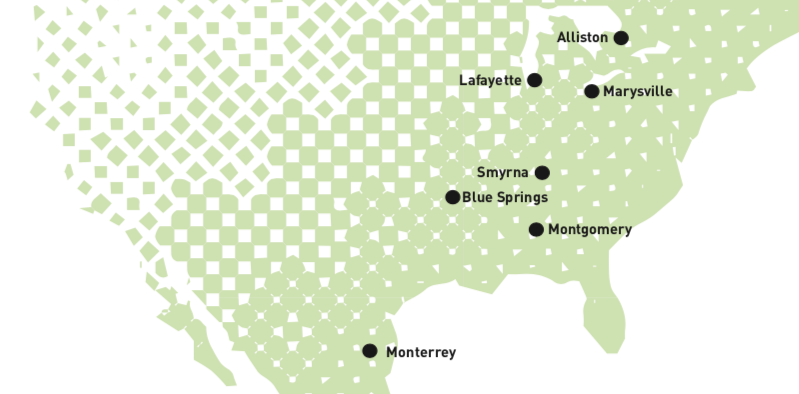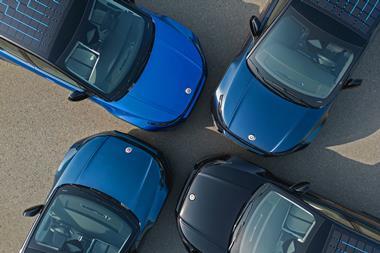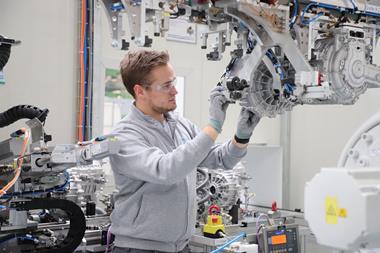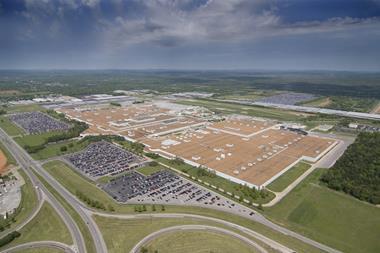Responding to the boom in SUV and crossover markets, the OEMs of Japan and Korea continue to invest in manufacturing operations across their long-established North American networks. Ian Henry reports
 Cross-border CorollaAfter a period of not investing in North America, Toyota is once again expanding in the region. It is building a new plant, with Mazda, in Alabama and committing new funds to several of its existing plants. A total of US$10bn is scheduled to be invested by Toyota in North America by 2023. This will include the US$179m being invested at Blue Springs, Mississippi, which made the Corolla sedan, now on the TNGA-C platform, creating 400 jobs. Some production of the Corolla in Mississippi – and at the new plant in Alabama – will be of volume transferred from Canada where additional capacity for the RAV4 is required. In addition, it is interesting to note that the next Corolla hatchback will be imported from outside the US, as volumes for the hatchback have been declining, making local production of this version uneconomic; however, where the imported hatchback will come from (Japan or even the UK, where the same vehicle will be made as the Auris from the end of this year) remains to be seen.
Cross-border CorollaAfter a period of not investing in North America, Toyota is once again expanding in the region. It is building a new plant, with Mazda, in Alabama and committing new funds to several of its existing plants. A total of US$10bn is scheduled to be invested by Toyota in North America by 2023. This will include the US$179m being invested at Blue Springs, Mississippi, which made the Corolla sedan, now on the TNGA-C platform, creating 400 jobs. Some production of the Corolla in Mississippi – and at the new plant in Alabama – will be of volume transferred from Canada where additional capacity for the RAV4 is required. In addition, it is interesting to note that the next Corolla hatchback will be imported from outside the US, as volumes for the hatchback have been declining, making local production of this version uneconomic; however, where the imported hatchback will come from (Japan or even the UK, where the same vehicle will be made as the Auris from the end of this year) remains to be seen.
In Canada, US$1.1bn is being invested to upgrade two factories in Ontario, both of which make the RAV4, including a hybrid model. 8,000 new jobs will be safeguarded and another 450 will be created. In addition, modest sums by comparison are being invested in Georgetown, Kentucky for the next Camry and Avalon, but a much more substantial sum, US$1.6bn is being invested in Alabama in a new JV plant to be operated with Mazda. Capacity is being installed to make 300,000 cars and SUVs, employing 4,000. Production will be split equally between the Corolla and a Mazda crossover. Producing the Corolla at this plant, rather than in Mexico (which is where it was due to be made), will allow the Mexican plant to produce 100,000 Tacoma pick-ups which its US factory in Texas cannot produce owing to capacity constraints there.
Cometh the crossoverHonda, like Toyota, is expanding its production capacity for crossovers, especially the CRV. At Marysville in Ohio it will add the CRV to its production roster, making it the fourth North American plant capable of making this model. The other three are East Liberty in Ohio, Greensburg in Indiana, and Alliston in Ontario, in Canada. The Marysville plant will be able to add CRV production relatively easily because the CRV uses the same inner frame construction process used on the Accord sedan currently made in Marysville. Capacity at Marysville was increased from 1,700 to 1,900 units a day when the new Accord was launched and with declining sales of the Accord, the plant has ample capacity to make more CRVs. In fact, Accord production is being cut to reduce the 100+ days of stock of Accord which Honda dealers had accumulated by April 2018. Honda, moreover, is not alone in North America in finding it has too much capacity to make sedans as the market continues to move to crossovers. Ford has gone one step further, as noted earlier, by planning to drop sedans entirely from its future line-up.
Life in LafayetteOne of the smaller Japanese vehicle companies, Subaru, has a successful and expanding plant, at Lafayette, in Indiana; this is actually Subaru’s only manufacturing plant outside Japan. The factory produced 364,000 vehicles in 2017, with plans for this rise to c400,000 units a year now that the large Ascent crossover (which can be made in 7 or 8 seat formats) has been added to the Impreza and Outback models made in Lafayette.
Taking stockNissan is reported to be cutting production in North America, at least according to reports coming out of Japan. In April 2018, Nissan’s head of North American sales told dealers to sell off excessive inventories, if necessary by discounting. Models affected include the Altima and Rogue and contributed to a fall in North American profits in the last financial year of over 30%. Nissan wants to cut its dealer stock from nearly 90 days to around 50-60 days and this has had to involve a cut back in production.
Reprise of this came out in April and May, not long after Nissan’s global Chief Performance Officer had suggested that its US plants were full – and that more capacity might be required However further investment by Nissan in the region seems unlikely at this time.
AMS visits Nissan Smyrna
It happens in MonterreyHyundai-Kia complete the Asian presence in North America. In Mexico Kia has a 400,000 upa plant in Monterrey which it describes as a strategic bridgehead, connecting North and Central/South America. More specifically, although around half of the output from Monterey is destined for the US as things stand, it will also be Kia’s base for penetrating into Mexican market, as well as markets in Central and South America. Hyundai has a major plant in Montgomery, Alabama, which makes more than half of the models it sells in the US, notably the Sonata and Elantra sedans and Santa FE SUV. In addition to vehicle production, Hyundai makes engines in the US and in May this year announced plans to invest US$388m to upgrade its engine production line; US$40m alone will be spend on a head machining line which will be operational in mid-2019. Further north in Georgia, sister company Kia makes the Sorento crossover and Optima sedan.
AMS visits Hyundai Montgomery
































